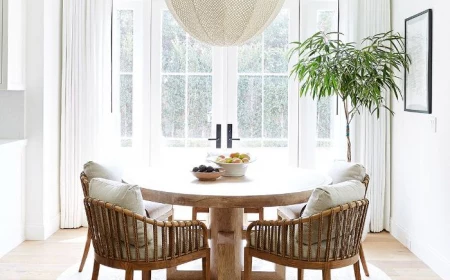Is Your Dining Room Just… There? Here’s How to Make It a Space You Actually Love
So, let’s talk about the dining room. For a lot of folks, it’s either a formal, untouched museum piece or just a landing strip for a table and some chairs. But after years of designing spaces, I can tell you that a great dining room is one of the hardest-working spots in a home. It’s where you connect, celebrate, and make memories. For any of that to happen, though, it has to be built on a foundation of pure function. Style is the fun part, but function comes first.
I learned this lesson the hard way, and it’s a story I’ll never forget. Early in my career, I was working on this gorgeous, but very narrow, dining room in a historic home. The client had their heart set on a massive, ornate table that could seat twelve. And honestly? It was a work of art. We got it into the room, and it looked straight out of a magazine. It was perfect… until they tried to host their first dinner party.
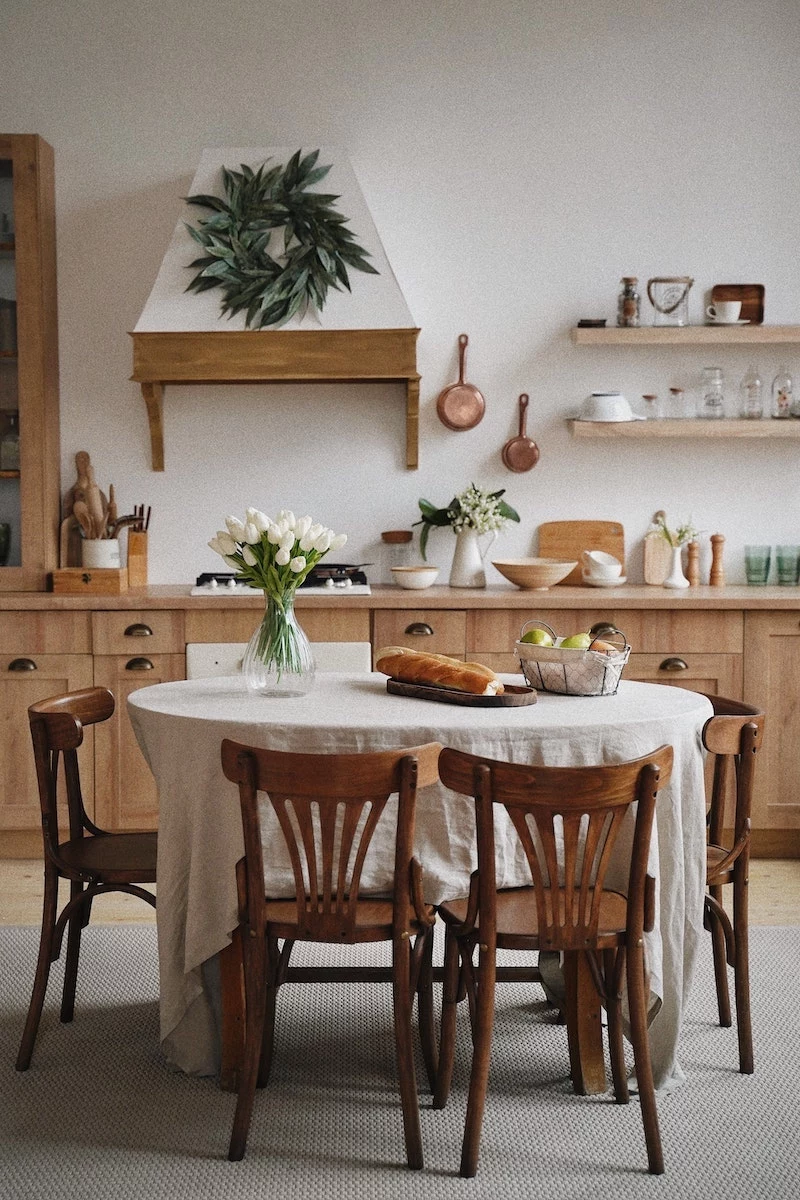
Total chaos. Nobody could pull their chair out without ramming it into the wall. Getting up to grab a drink meant at least three other guests had to stand up and suck in. That beautiful room was a complete failure in practice. We ended up having to swap the table for a much smaller, custom piece. It was an expensive, humbling mistake, but it taught me the most important rule in design: a room’s success is measured in inches, not just aesthetics.
This guide isn’t about chasing fleeting trends. It’s about a practical process for creating a dining room that truly works for the people living in it. We’ll get into the nitty-gritty measurements, the feel of different materials, and the choices that make a room both beautiful and usable for years to come.
First Things First: Understanding Your Space and Flow
Before you even dream about furniture or paint colors, you have to get real with the room itself. I know, everyone wants to skip this part, but it’s the bedrock of a good design. All you need is a tape measure, a notepad, and about fifteen minutes of your time. Don’t eyeball it—get the exact numbers.
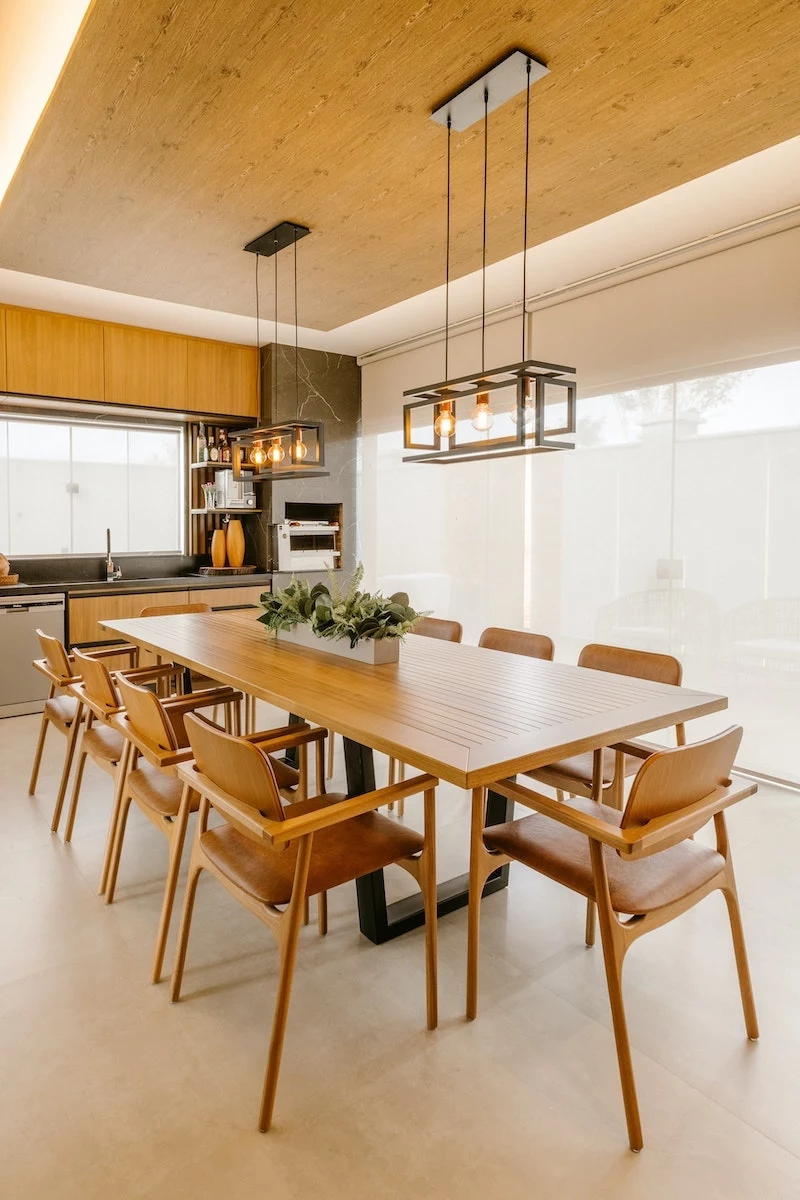
- Room Dimensions: Measure the length and width. Easy enough.
- Ceiling Height: Go from floor to ceiling. This is super important for figuring out the scale of your light fixture later.
- Obstructions: Now, map out everything else. Windows, doorways, that awkward radiator, the fireplace. Make a special note of which way doors swing, because that swing eats up valuable floor space.
These numbers are your blueprint. I always sketch a quick floor plan on graph paper. It helps me visualize the space and test layouts without breaking my back. A quick tip from my own experience: use painter’s tape on the floor to mark out the dimensions of a table or sideboard you’re considering. It lets you physically walk around the
Inspirational Gallery
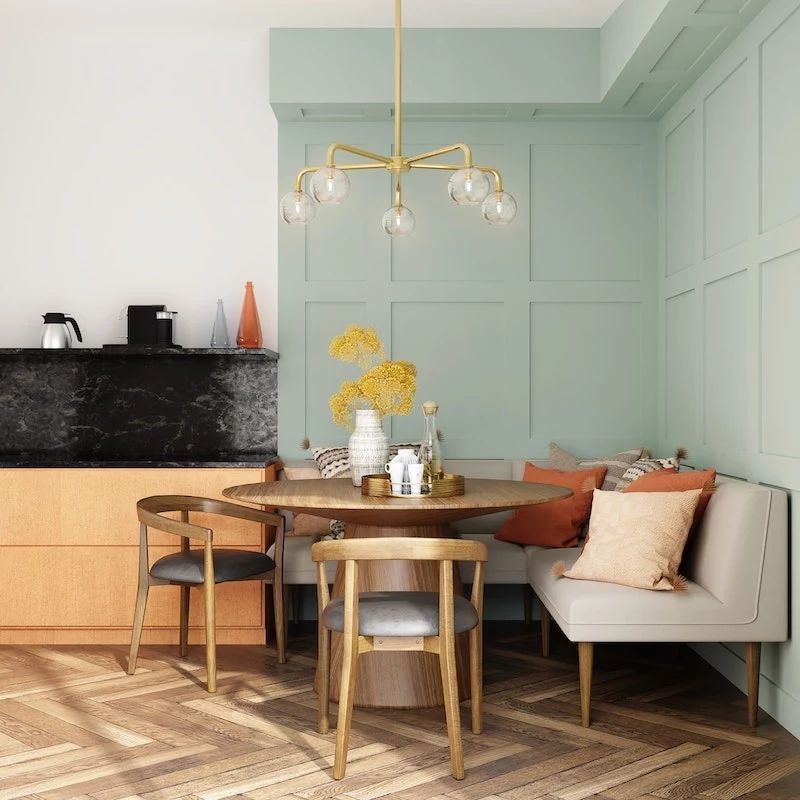
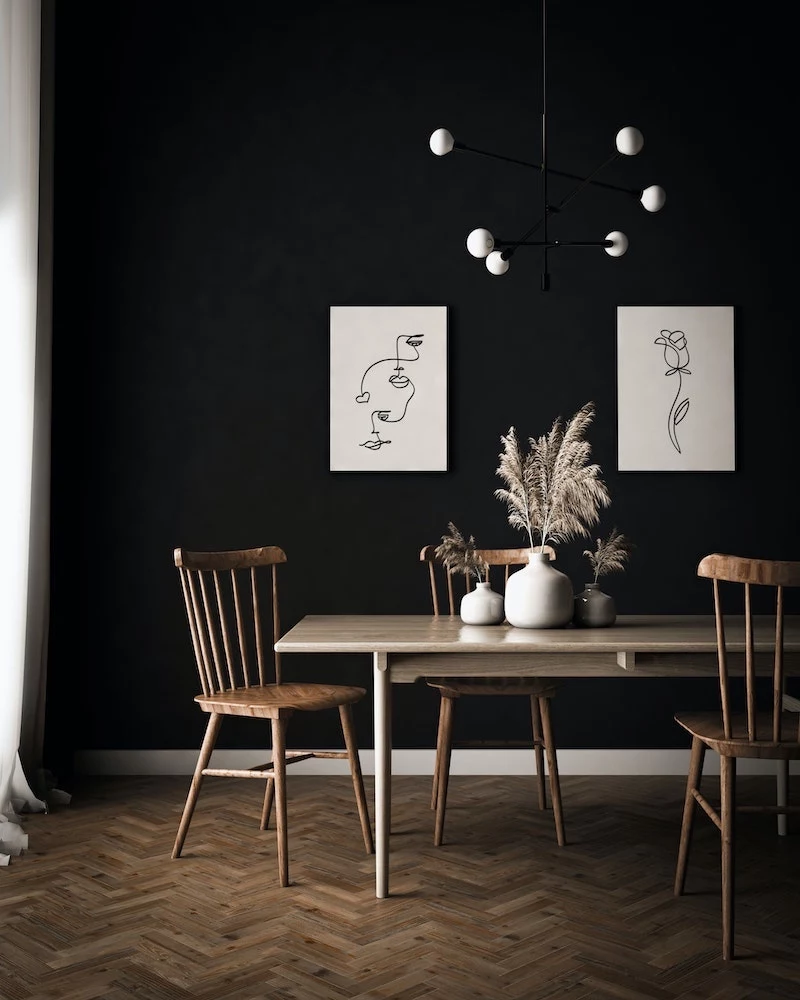
Is my chandelier hanging too low… or too high?
It’s a question that plagues even seasoned decorators. The sweet spot is surprisingly precise: the bottom of the fixture should hang between 30 and 36 inches above the surface of your dining table. This provides ample light for your meal without obstructing views across the table or creating an uncomfortable glare. For ceilings higher than 8 feet, you can add about 3 inches for every extra foot of ceiling height to maintain a sense of balance in the room.
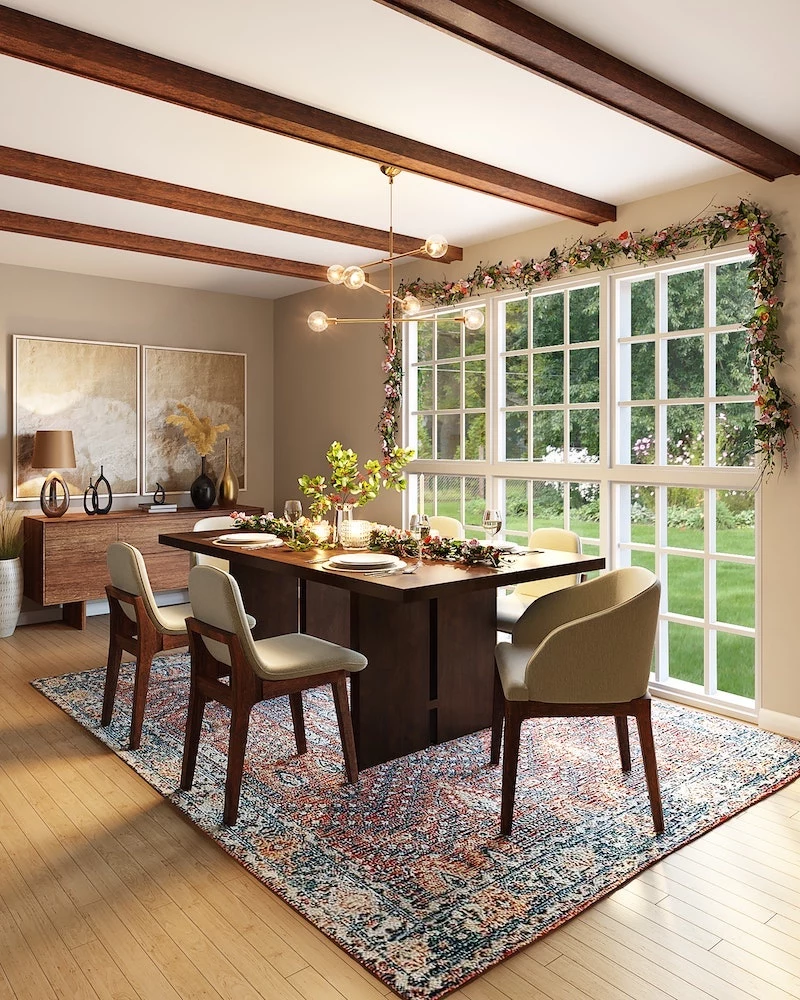
The golden rule for a dining room rug: all four legs of a chair should remain on the rug, even when pulled out from the table.
This translates to needing a rug that extends at least 24 inches beyond your table’s edge on all sides. It’s not just an aesthetic guideline; it’s pure function. This clearance prevents the annoying scrape and snag of chair legs catching on the rug’s edge every time someone gets up or sits down, ensuring a smooth, uninterrupted dining experience.
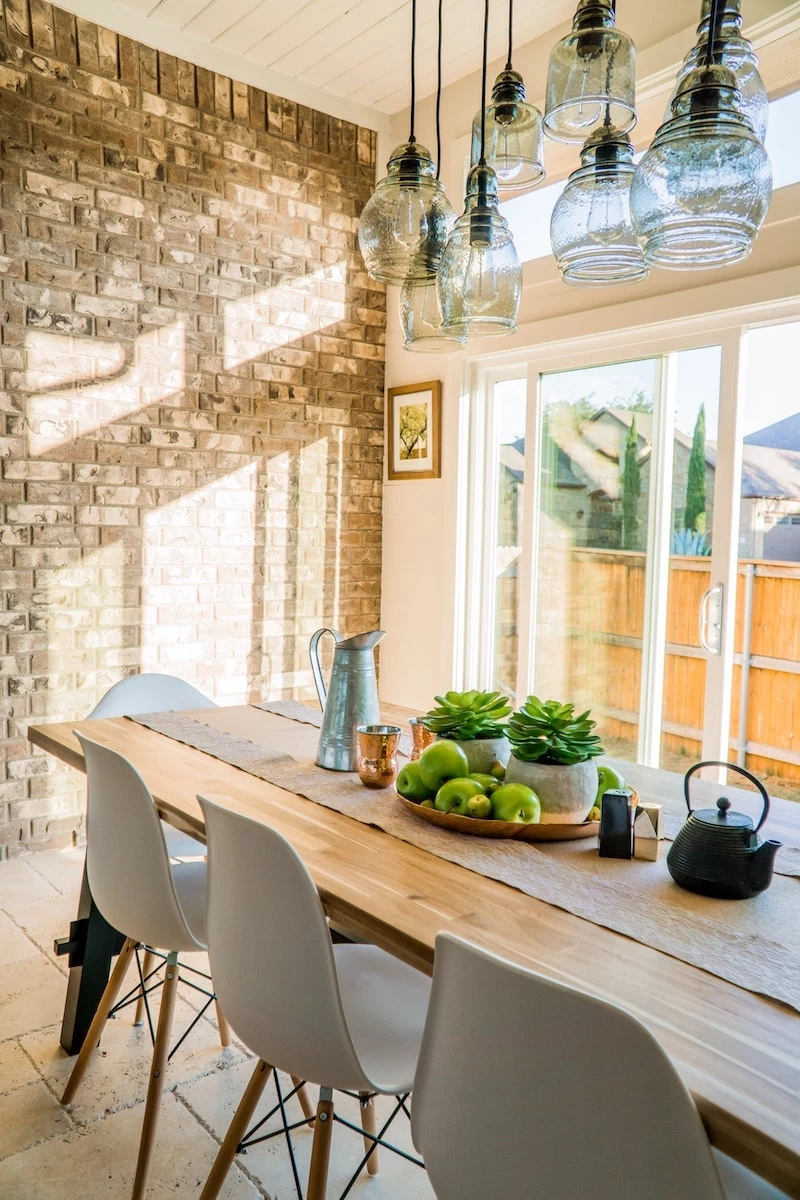
Don’t be afraid to embrace the dark side. A dining room, often used in the evening, is the perfect space to experiment with dramatic, saturated color. A deep, moody shade like Farrow & Ball’s ‘Hague Blue’ or Sherwin-Williams’ ‘Iron Ore’ creates an instant sense of intimacy and occasion. Under the warm glow of evening light, these colors recede to create a cozy, restaurant-like cocoon that makes conversations feel more special.
Solid Wood Table: Think warmth, character, and timelessness. An oak or walnut table from a maker like Article or Crate & Barrel brings natural texture and ages beautifully, showing the marks of family dinners over time. It’s forgiving but requires some care (hello, coasters!) to avoid water rings.
Sintered Stone Table: For a sleek, modern, and virtually indestructible option. Surfaces from brands like Neolith are non-porous and resistant to heat, scratches, and stains. They offer the dramatic look of marble without the high maintenance, making them perfect for busy families who want style without stress.

